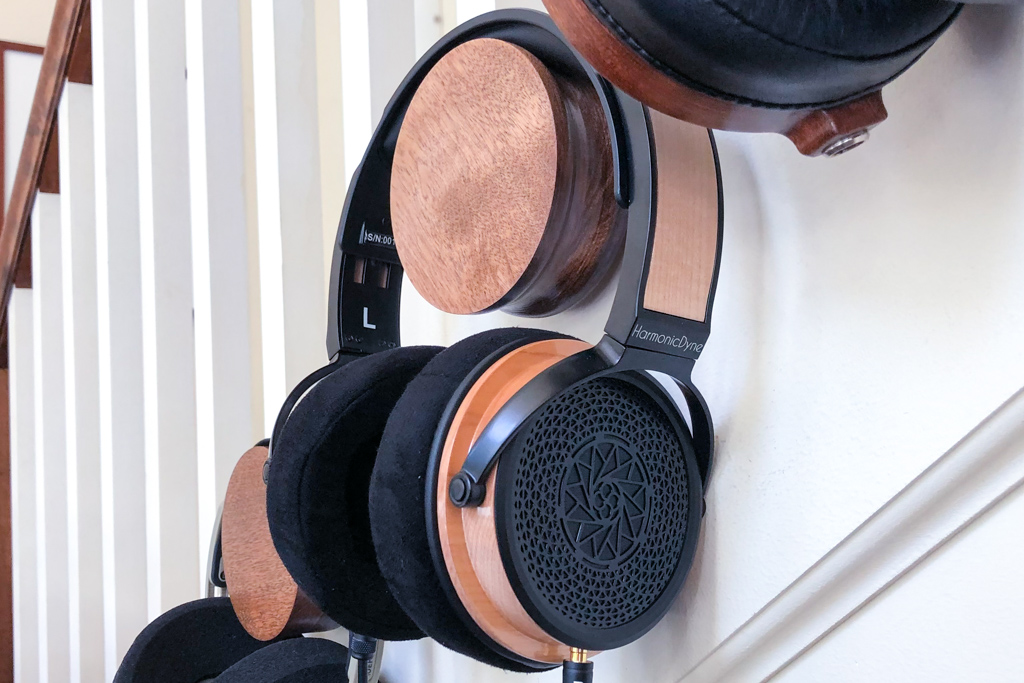Is HarmonicDyne delivering a new god-tier listening experience or did Zeus just get all wet?
To date, HarmonicDyne has released 3 models of full-sized headphones. Although, it’s arguable that they’ve only made one pair and two revisions. First came the Helios, featuring a distinctive plastic and aluminum band with wood inserts, flawless laser-cut wooden cups, and stainless-steel grills.
Then came the Zeus, featuring all those same attributes, plus the addition of beryllium drivers, bigger and better ear pads, and a swanky hard storage case.
Now meet the Poseidon. Same band, same cups, same grills? But no! The metal parts are all black, rather than silver, and the dark walnut wood has been changed to a lighter shade of maple. The case has returned, albeit with a color change, and the drivers are now “custom 50mm nickel diaphragm dynamic drivers.”
- Smooth and natural sound character
- Punchier and more airy than the Zeus
- Black powder-coating looks terrific
- Serious storage case
- Good balanced cable and single-ended adapter included
- Comfortable and non-fatiguing for long listening sessions
- Headband quality doesn’t match the flawless earcups
- Lighter colored wood won’t be loved by all
- Same build quality as the less-expensive Helios
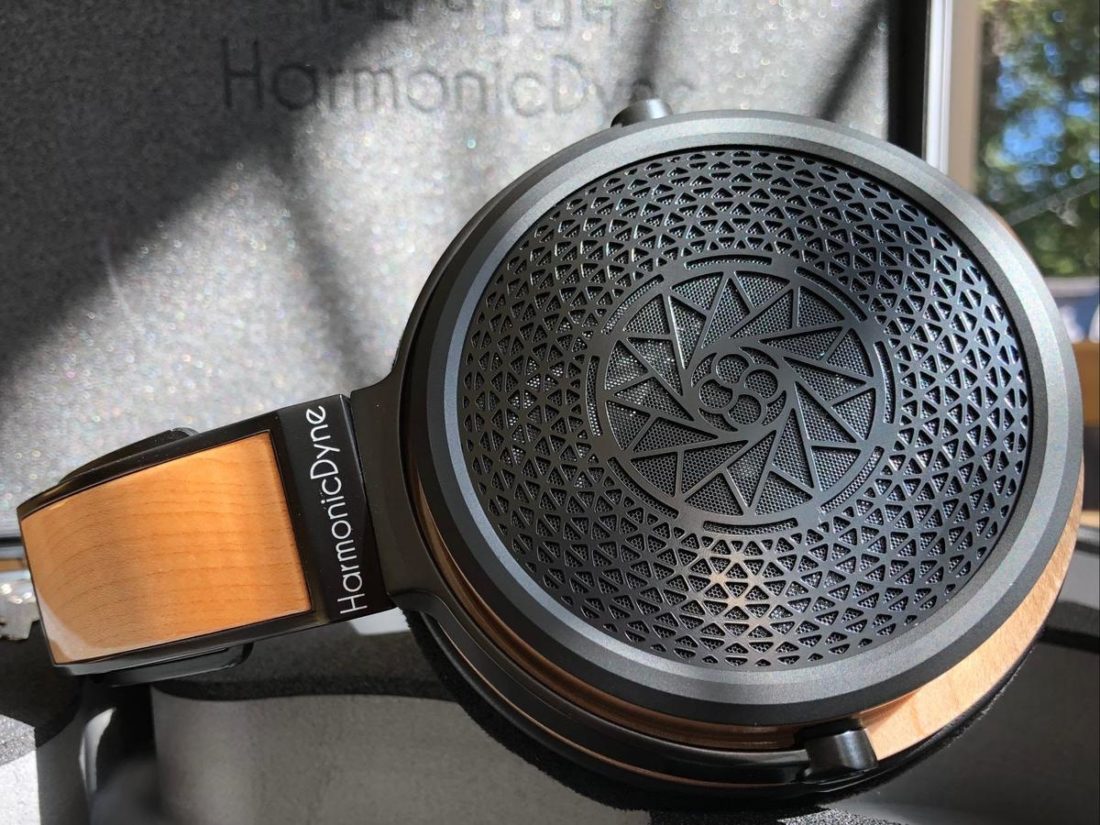
Frankly, my feelings about the Helios were merely lukewarm, and while the Zeus offered a significant upgrade (especially in sound quality), I questioned their value proposition. The Zeus are twice the cost but feature almost identical build quality to their sibling. I wondered how much we were paying for the fancy new cable and case, in addition to the more meaningful driver and earpad change.
Are the Poseidon a real upgrade to the Zeus or merely a side-grade? Other than the change to nickel-coated drivers, the changes appear mainly cosmetic. While I can’t answer if the Poseidon will also have a price bump, does this shared build quality and materials better fit a sub-USD$200 pair of headphones?
The water is warm. Dive in and let’s find out together.
Company Overview
In their own words, “Linsoul was founded in 2016 by Crazy HiFi team with the intention of providing world class customer service to the audiophile and music loving communities.” They curate audio products from Chinese Hi-Fi (Chi-Fi) companies and provide customization services including custom-molded IEMs.
”OUR STORY
The founder of Linsoul realized that Hifi music listening should be inspirational and modern stylish. It can be combined with sound quality and stylish to express your music style.
MISSION
To deliver Hi-Fi products that surpass the norm in terms of both Sound Quality and visual intrigue.” – Linsoul
I think it is important to note that the Story and Mission statements of Linsoul declare that they do not solely strive for products with the highest sound quality. Rather they refer to a combination of sound quality and visual style. It seems the aesthetic appeal of their products is as important as how they sound.
Technical Specifications
- Form: Open-back, over-ear
- Drivers: 50mm nickel-coated diaphragm dynamic drivers
- Impedance (Ohm): 64 Ohm
- Sensitivity (dB): 103 ±2dB@1000 Hz
- Frequency Response (Hz): 10 Hz – 40 kHz
- Removable Cable: Y – 2m
- Source Jack: 4-pin XLR, 6.35 TRS adapter included
- Cup/Shell Jack: 2×3.5mm
- Mic: N
- Weight (g): 380g without cable
- Materials: Plastic, aluminum, stainless steel, maple wood
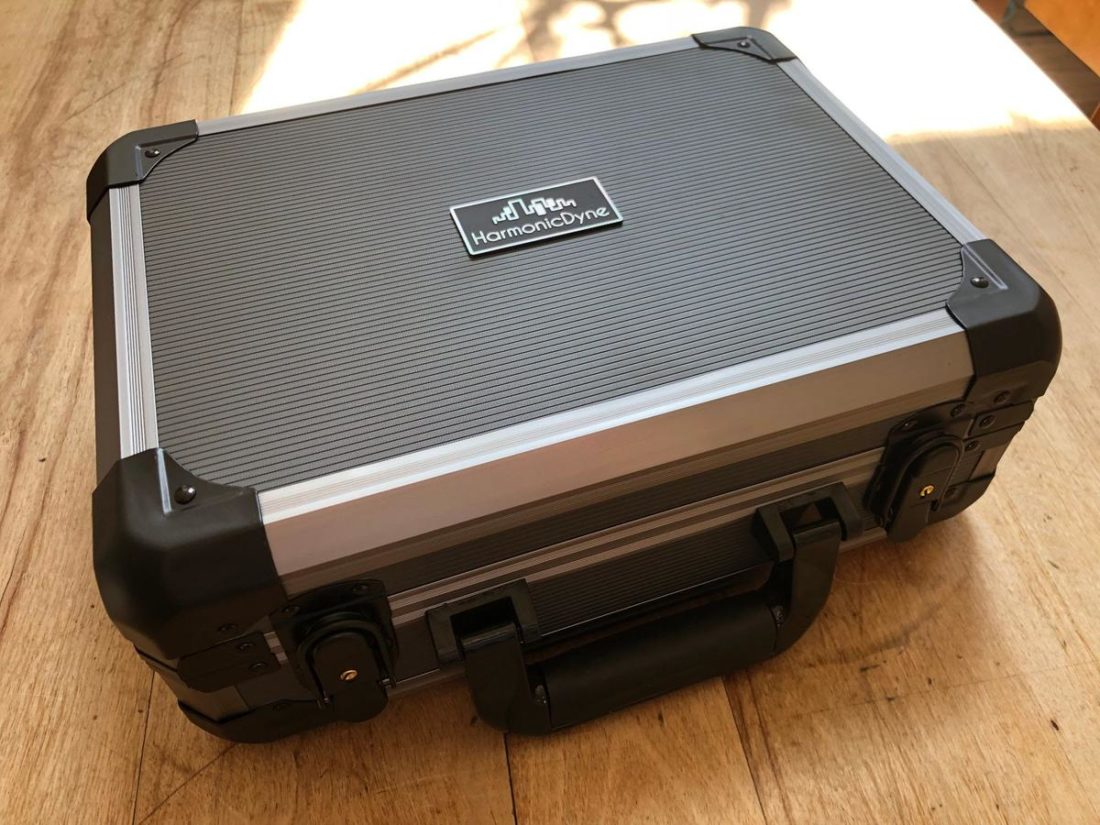
Packaging
Unboxing the Poseidon gives a real glimpse at the experience of opening a TOTL product. Unlike cutting tape seams on a cardboard box, unsnapping the buckles on the hard case and lifting the lid never fails to impress. Inside you are greeted with laser cut foam nestling the headphones, an individual serial number plate, case keys, and a storage area containing the cable and soft bag.
The layout, fit, and finish are impeccable.
In the box
- Poseidon headphones
- Hard locking travel case
- 2m Balanced cable (2×3.5mm to 4-pin XLR)
- Single-Ended adapter cable (4-pin XLR to 6.35mm TRS)
- Cloth protective bag
- Manual
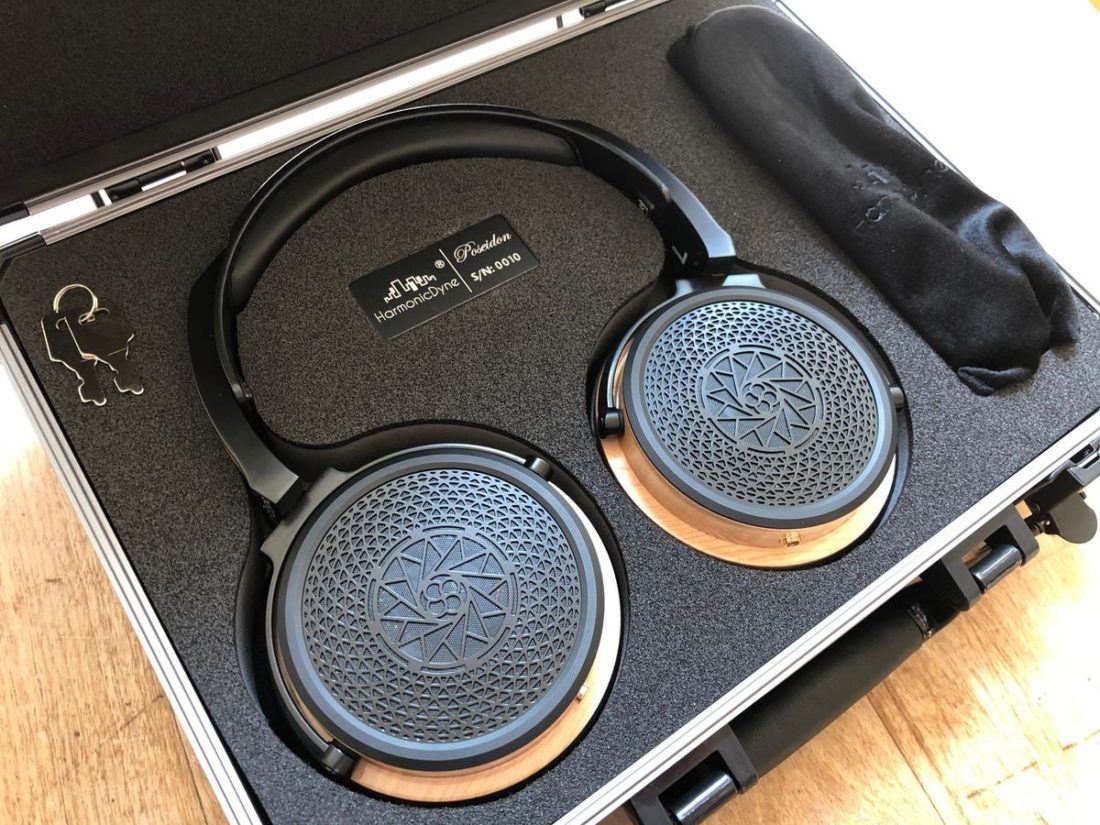
The case and accessories are all an upgrade over those included with the Zeus. While the case appears to be essentially identical in construction, the new two-tone black and grey scheme elevates the aesthetics. Even the interior foam and quality of the cutouts are noticeably improved.
Cable
I really like the new Poseidon cable. It consists of two strands covered in fabric from the 4-pin XLR plug to the y-split. It’s plain black rubber from the split to the dual 3.5mm plugs. Also included is a short female 4-pin XLR jack to 6.35mm plug adapter for single-ended use.
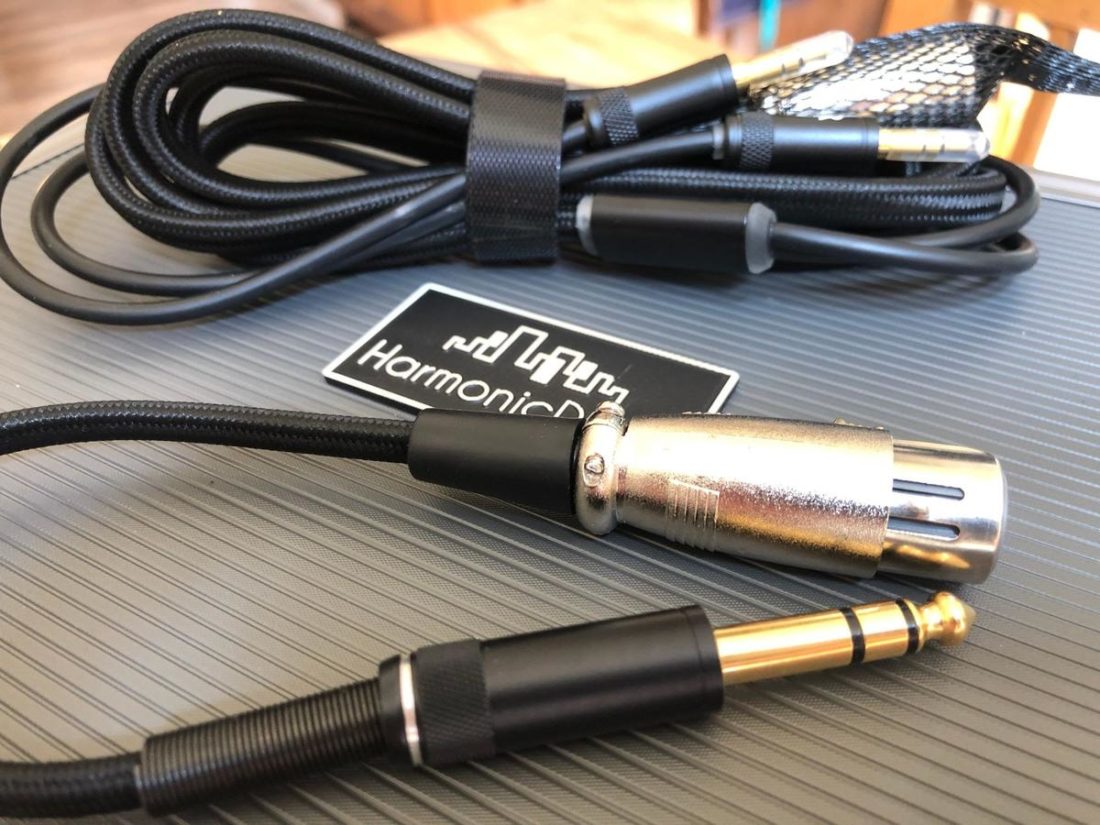
Compared to the Zeus cable, the new one is far more supple and flexible, and I much prefer it. The mega-buck Focal Stellia headphones arrived this week as well for review, and interestingly, the Poseidon cable shares much in common with the Focal one.
Both are long, rubberized, fabric wrapped, dual-wire cords, terminated in 4-pin XLR and dual 3.5mm. The most appreciable difference is Focal’s use of industry-standard Neutrik 4-pin connectors, rather than the cheaper-seeming, unbranded versions included on the HamonicDyne cable.
Design
As noted, the Poseidon share much of the same materials and design as their two siblings. Again, the precisely crafted wooden cups are the standout feature, while the headband doesn’t seem quite the same level of construction quality.
A major positive is the change to powder-coating the metal bits black. This removes the slight visual mismatch between the aluminum parts and the steel grills. I’m less sure about the switch from walnut to maple. Clearly, HarmonicDyne is going for a contrasting color scheme, but I prefer the looks of the darker wood. The thin wooden veneer on the headband visually stands out a little too much.
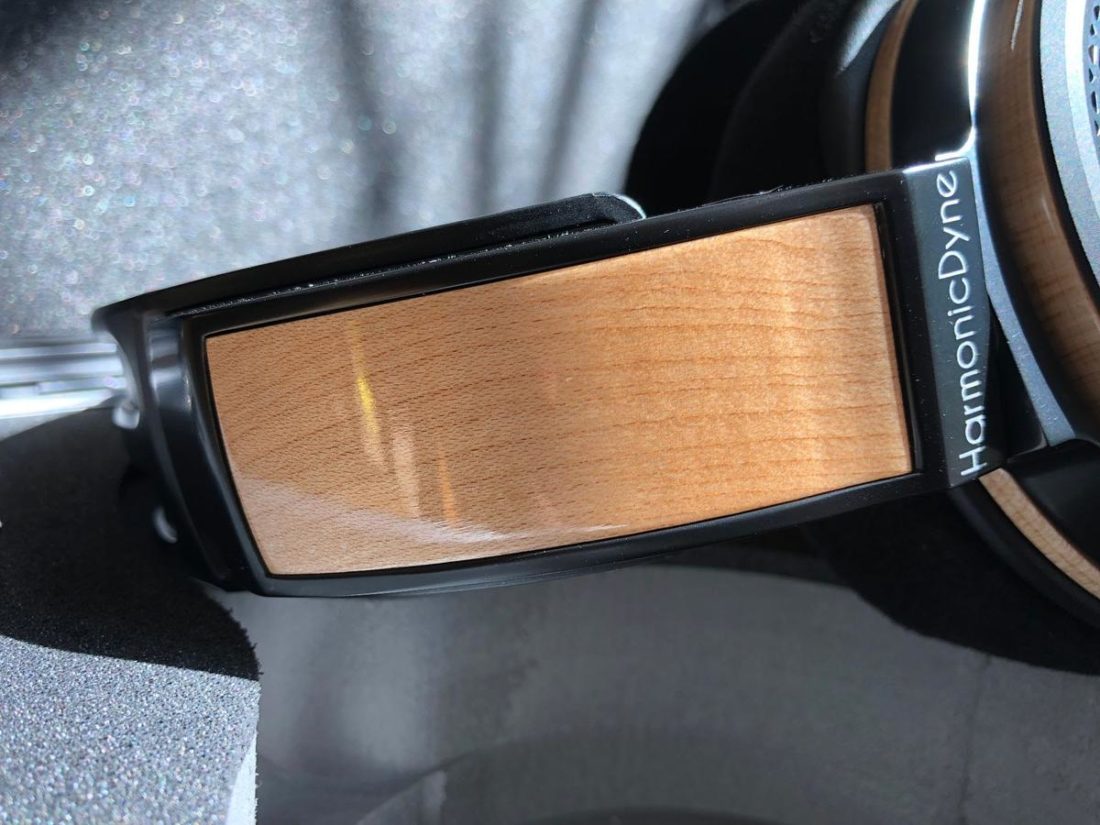
Comfort
The construction of the headband is more suitable for a sub-$200 model such as the Helios. While it contains a steel core, and HarmonicDyne claims “the headband itself is made with several layers of resonant damping polymers,” in practice it feels a bit too plastic and creaky. I’ve run across reports in online forums of Zeus headband failures.
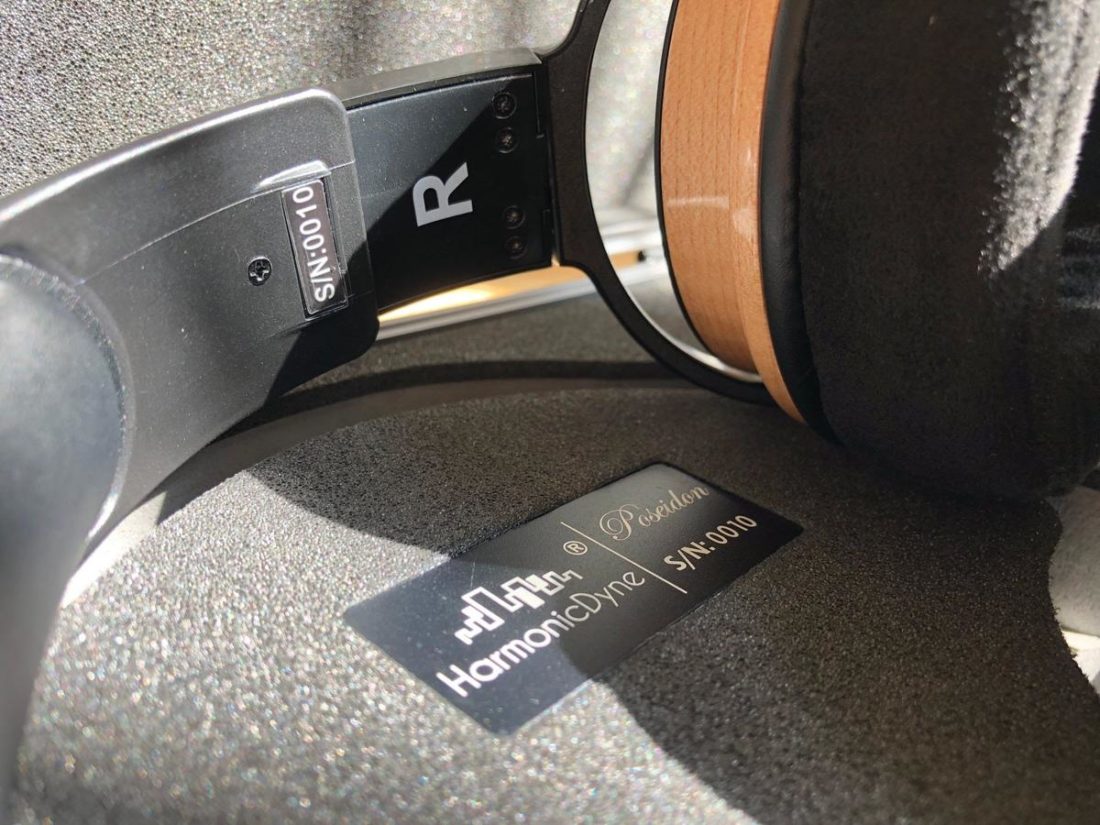
The plush ear pads and padded band are very comfortable.
On the positive side, the headband has many adjustment positions and is well padded and comfortable to wear. Paired with what appear to be the same soft, deep, “nanometer suede” ear pads that debuted on the Zeus, the Poseidon can be worn very comfortably for hours. They remain remarkably cool and hot-spot-free.
Internals
Cosmetic changes aside, what most differentiates the Poseidon is the change of driver material. Lately, it seems Beryllium-coated drivers are all the rage, so it’s interesting (and innovative) to see a new coating material being hyped.
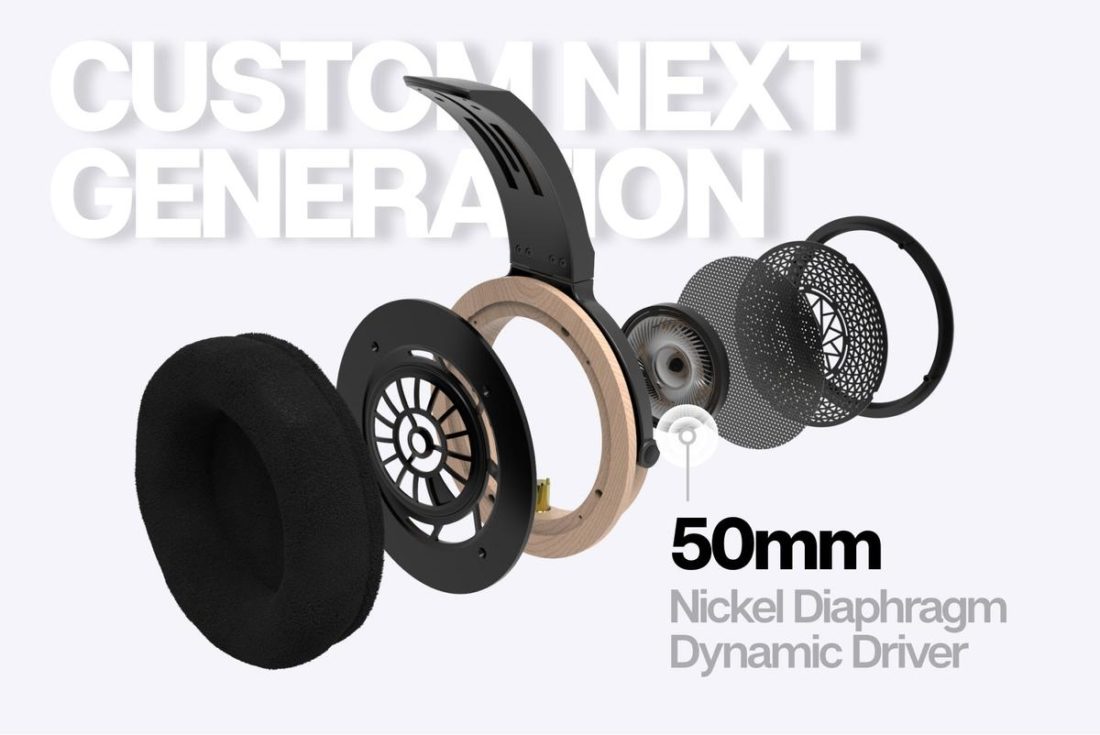
“While beryllium has been hailed as the king of diaphragm materials so far, the molecular composition of nickel proves to be a much superior metal for the conductance of sound. With four times the density and more than double the tensile strength of beryllium, purified nickel is a much stiffer and responsive diaphragm material, allowing greater clarity and articulation with reduced distortion in the low frequencies.
Most nickel-based drivers used in audio products are nickel-alloys, meaning they have been mixed with other inferior metals to reduce production costs. However, the Poseidon utilizes only the purest laboratory-grade nickel, producing an extremely well-controlled frequency response with unparalleled technical performance.” – Linsoul
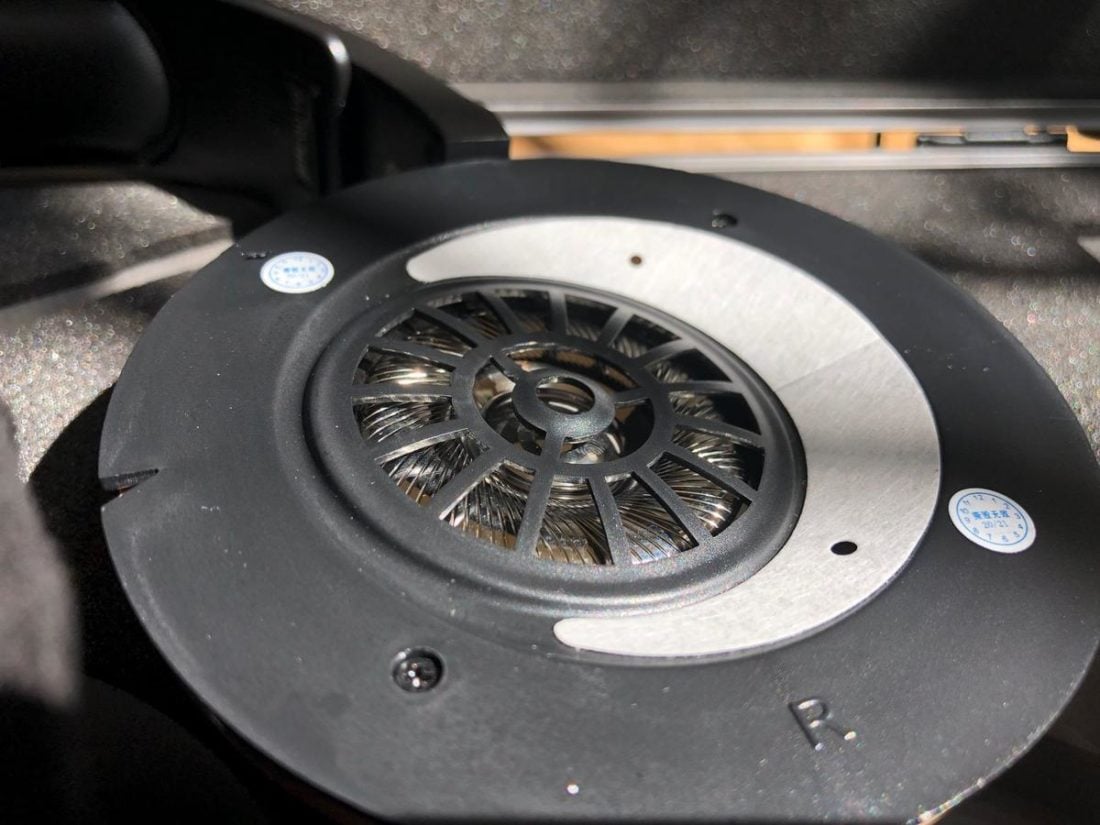
There’s no question that the change of driver material and ear pads made a significant improvement in the sound of the Zeus from the Helios. Linsoul apparently believes the change to a nickel coating will do the same for the Poseidon.
HarmonicDyne driver comparison
| Headphones | Helios | Zeus | Poseidon |
|---|---|---|---|
| Driver | 50mm German-engineered, custom composite dynamic drivers | 50mm Beryllium-coated dynamic drivers | 50mm Nickel-coated dynamic drivers |
| Impedance | 16 Ohms | 64 Ohms | 64 Ohms |
| THD | <1% (1000 Hz, 1mW) | ≤0.2% (1000 Hz, 254mW) | ≤0.2% (1000 Hz, 1mW) |
| Frequency Response | 10Hz – 40kHz | 10Hz – 40kHz | 10Hz – 40kHz |
HarmonicDyne Poseidon Sound
HarmonicDyne claims that the “new nickel diaphragm driver further enhances the resolution beyond high-fidelity standards, bringing out unheard details across the entire frequency spectrum.” With a claimed frequency response of 10Hz to 40kHz and open-backed design, HarmonicDyne boasts that the Poseidon have “a surreal airy character and lifelike soundstage” that is “both accurate and musical.”
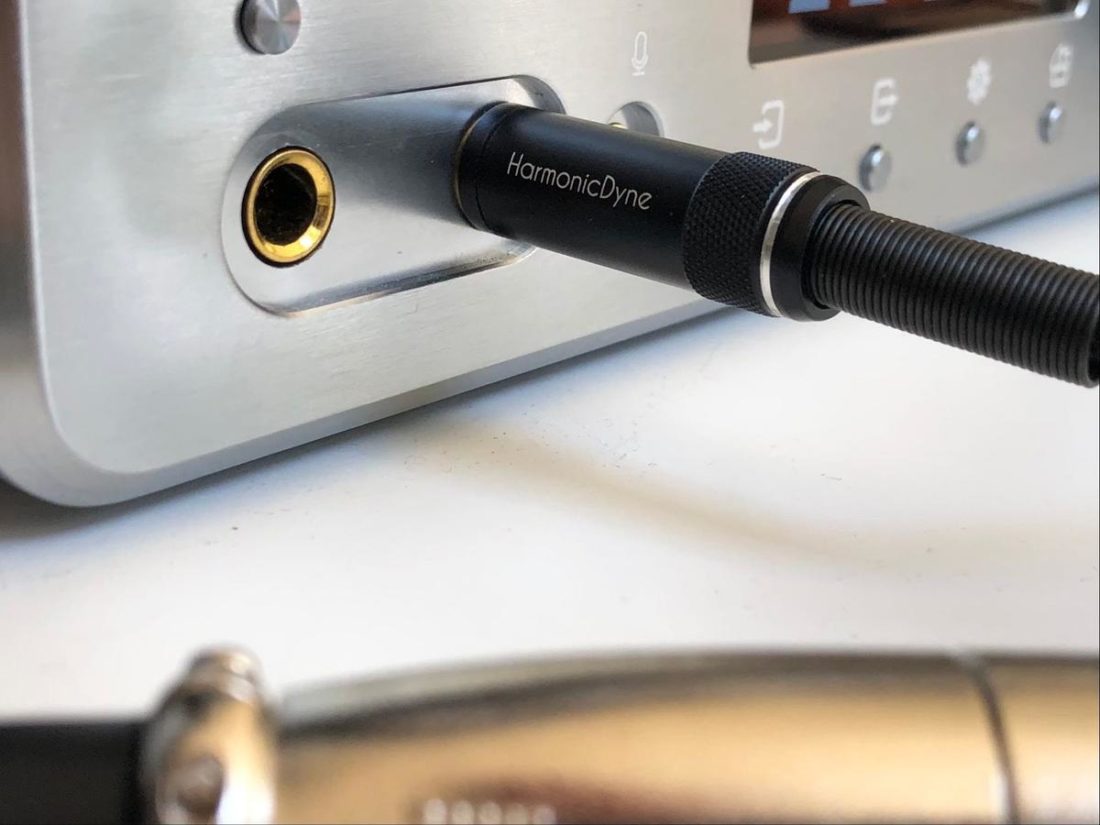
The Poseidon continue to feature an angled driver positioned in front of the ear canal and angled backward – a design used by other manufacturers including Stax, Beyerdynamic, Sennheiser, and Ultrasone. This is done to better simulate the natural interaction of sound waves and the ear structure, and to improve imaging, soundstage, and a sense of space. As a result, the Poseidon give a convincing impression of an open and spacious sound field.
While the Zeus sound was a major change from the Helios, the differences between the Zeus and the Poseidon are far subtler. Measurements indicate that the sub-bass response of the Zeus is boosted, while there is a bit of a bump in the Poseidon mid-bass range. The rest of the frequency spectrum is fairly similar with a little bit more treble energy evident in the Poseidon.
To be honest, I like the Poseidon sound more than the Zeus. They exhibit very competent resolution, and voices and instruments are presented with natural and real-feeling tonality. They maintain the neutral timbre and smooth texture of the Zeus while adding a helping of mid-bass punch and a touch more upper air. The overall impression is laid-back rather than forward or in-your-face, but the Poseidon deliver enough dynamics and sweetness to avoid feeling tame or boring.
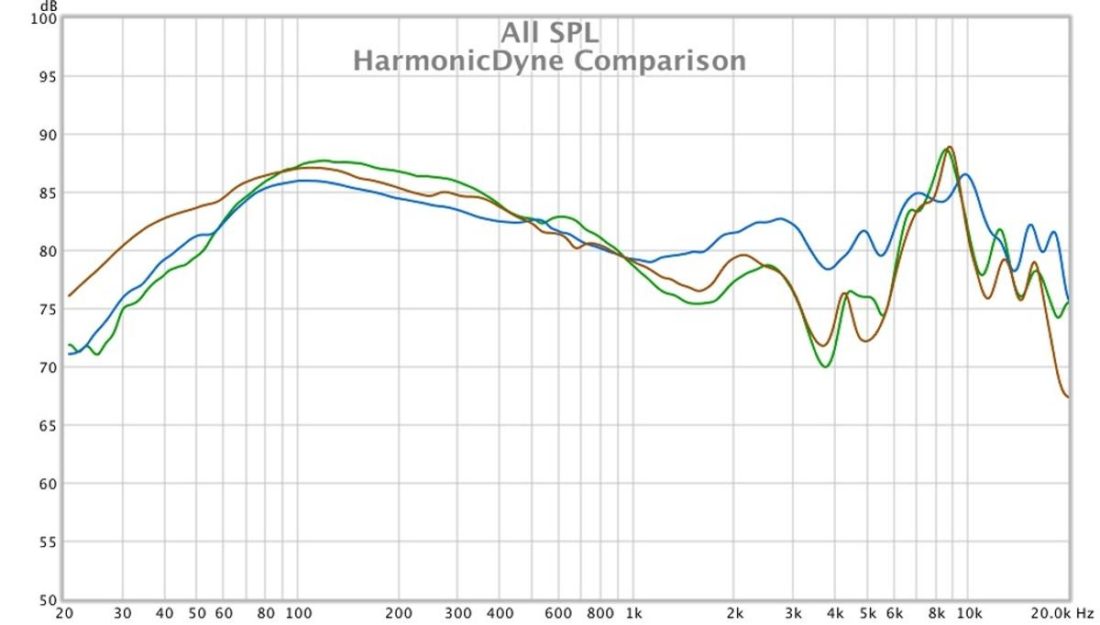
Bass
This isn’t exactly what I hear, nor what I measure. I do find the Poseidon deliver more mid-bass snap, although at the expense of some of the subterranean bass depth of the Zeus. Combined with a fast and tight response, the Poseidon are amped up a bit in energy, and all that punchiness adds up to a fun sound.
Midrange
The Poseidon are a mildly v-shaped set of headphones and the midrange sits a bit back in the mix, although what is there is very well done. I greatly enjoy the smooth midrange signature, and voices and instruments retain a fairly neutral and natural quality. Again, the Poseidon are a huge improvement over the unnaturally forward sound signature of the Helios and sound quite similar to the Zeus.
Treble
Both the Zeus and Poseidon are warmer and darker sounding than the Helios, however, the change in drivers seems to have added just a little more air and sparkle to the Poseidon. It’s a change for the better, IMO, and the smooth signature hasn’t been lost, just subtly improved upon.
Treble-heads should likely look elsewhere, but those who crave a warm and relaxed sound signature will likely be delighted with the Poseidon.
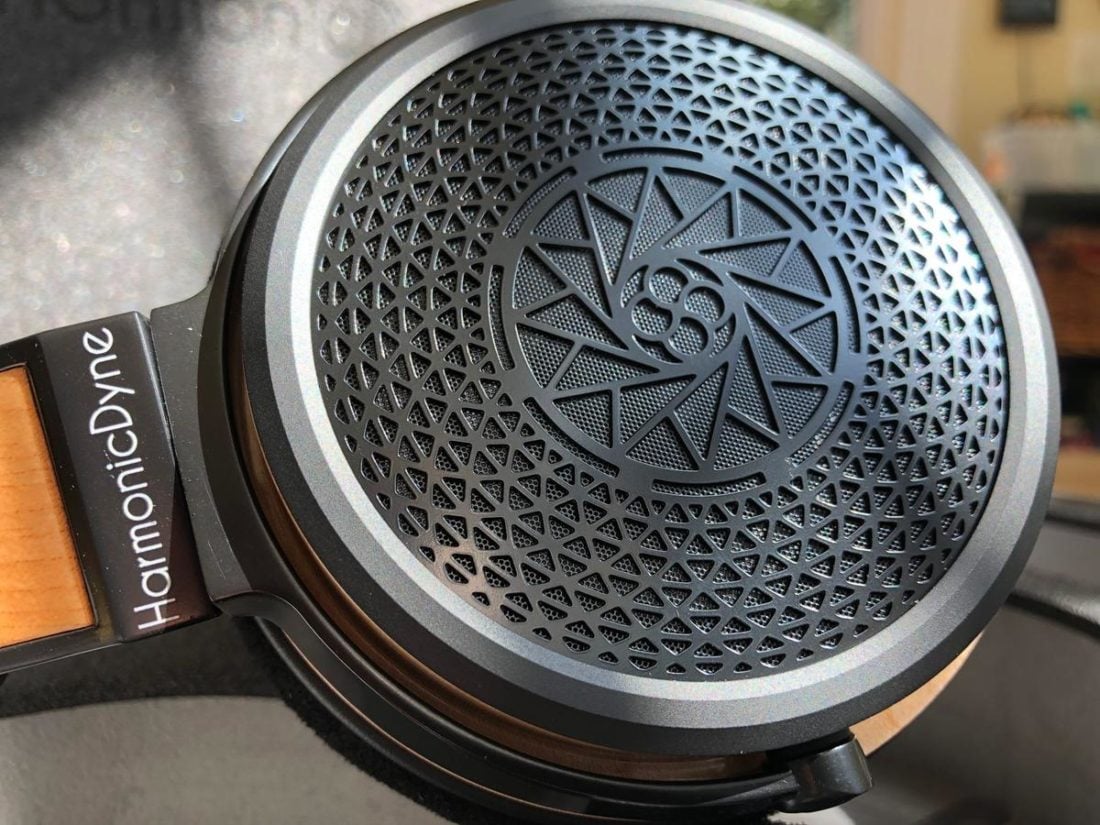
Where to Buy
Conclusion
Brother to Zeus and Hades, Poseidon is the god of the sea, earthquakes, and horses. While even I struggle to craft a relevant pun that includes all those elements, the sibling reference is evident. Featuring many of the same parts and construction, but in a new colorway, the lineage is evident. Poseidon has much in common with his brother.
The change of driver material coating has subtly changed things for the better. The Poseidon are both punchier and airier while maintaining that deliciously smooth character delivered by the Zeus. A side-grade perhaps, but in this case, a worthwhile one.
I now feel I was perhaps too hard on the Zeus in my earlier review. Even though the Poseidon offer much of the same, I find I appreciate them more. I couldn’t distance myself from the flaws of the original Helios, and I got hung up on the thought of paying twice as much for the Zeus, rather than truly judging them on their own merits.
It seems that time has created space for me to fairly assess things, and I’m far more impressed with the Poseidon than I expected I’d be.
Now if HarmonicDyne improved the band to match the quality of the cups and gimbals, and perhaps married the walnut and black designs, the inevitable next god-named model could truly rival, and perhaps best, far more expensive high-end headphones.
